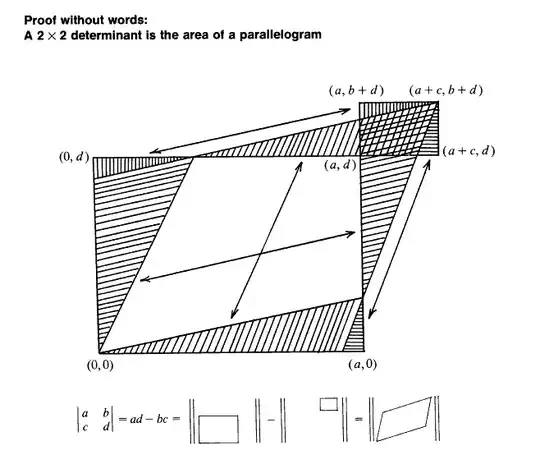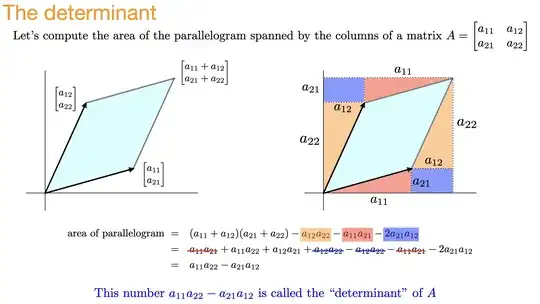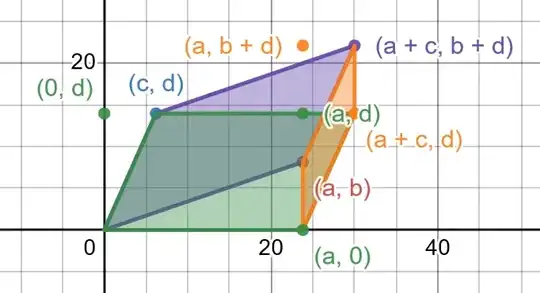Wrote this for a linear algebra class of mine. The argument is predicated on using shears.
Assume you have two vectors, (a, ay) and (xd, xyd+d). Weird choice and abundance of variables to be explained in a moment. I can obviously find the determinant of this, which is ad (do it).
So if I want to prove that the determinant is an area, I need to show that these weirdo vectors share an area with (a,0) and (0,d), which also has the determinant ad. Well, it turns out what I can do is shear the matrix with (a,0) and (0,d) as columns, since a shear does not alter the area at all (show this geometrically).
Take vector (a,0) and (0,d) and apply shear matrix (1,x,0,1), followed by (1,0,y,1), which gives you the original weirdo vectors (a,ay) and (xd, xyd+d). Since the shears do not change area, and we know the area of the rectangle formed by (a,0) and (0,d), the area of two arbitrary vectors may be expressed by its determinant, which we have shown to be identical to the determinant of rectangular matrix (a,0,0,d). QED.
You can extend this argument to 3D, etc. by applying shears in any arbitrary direction. Therefore, a determinant will provide you with a volume in any R^n.








